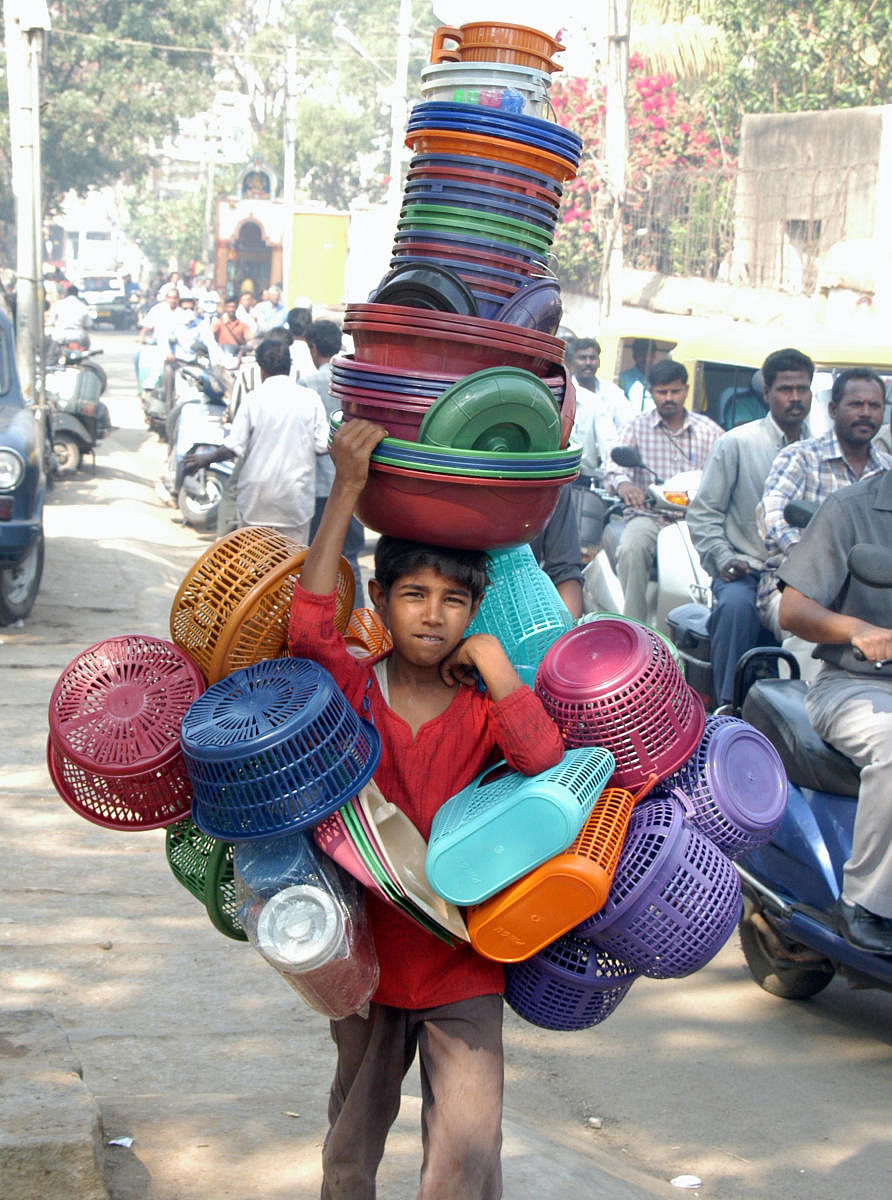
Despite several orders issued by the Karnataka High Court since 2013 to bring the number of out-of-school children (OoSC) to near-zero, a survey conducted by the Department of Primary and Secondary Education (DPSE) in January 2019 revealed that 70,116 children have dropped out, as against 14,000 identified during 2017-18, though the former figure covers children upto 16 years and not just 14 years.
In fact, as per a news report, the population of children in the age group of 6 to 17 in Karnataka in 2016 projected by the Union Ministry of Human Resource Development (MHRD) differs from the official number of school children of this age group enrolled in Karnataka by 17,66,294. This is a shocking difference in figures that needs to be explained by the Education Department. Several NGOs and a report by UNESCO also point to the unreliability of government data on OoSC in India.
The DPSE’s report to the court at a recent hearing stated that it had initiated a “Students’ Achievement Tracking System” (SATS) by digitising the records of students to track OoSC. While this is a good step, the department also stated that it relies on the guidelines of the MHRD for surveying and mainstreaming OoSC.
This is a completely retrograde step as the MHRD guidelines were issued in 2009 and prescribe a ‘curative approach’ to the problem of OoSC, whereas the Karnataka government itself is the forerunner of a ‘preventive approach’ to the problem and has taken several unique and progressive steps, pursuant to the suo motu PIL taken up by
the Karnataka High Court in May 2013.
The MHRD guidelines call for conducting surveys of OoSC once, at the end of the calendar year in December, and mainstreaming OoSC through ‘bridge’ and ‘remedial’ courses. This means that children who were not enrolled in June, or who dropped out between June and December, will not be tracked by the department until December.
The MHRD guidelines do not guarantee that after undergoing the remedial ‘bridge course’ in summer, the child will not drop out again as the guidelines do not prescribe a protocol for ensuring that the child is retained in school and that the root causes of why the child dropped out are addressed. The guidelines speak in vague, rhetorical terms about bringing in ‘inclusivity’ and ensuring that every marginalised child is brought to school. But neither the guidelines nor the DPSE explain how this will be done.
The department appears to be having amnesia about the steps that were initiated through the 2013 PIL. If Education Coordinators designated as Attendance Authorities (AAs) had been creating a record of all the children in an area one month before the beginning of the academic year and updating them every three months in the Village/Ward Education Register, there should not have been a need to do fresh surveys at the end of the year.
Changed definition
As per the changed definition of a ‘drop out’ that was issued, head-teachers had to report children who did not attend school for seven continuous days to the AAs. The AAs had to follow a protocol with prescribed time-frames, which included persuading parents, failing which parents and the child had to be brought before the Child Welfare Committee (CWC).
The CWC was to enquire into the reasons for dropping out and render assistance to the parents to enable them to send their child to school, which is in line with Article 18(2) of the UNCRC. Despite receiving assistance, if a parent failed to send the child to school, the CWC was to take charge of the child, as a last resort, and place it in a state-owned residential school or fit institution.
This provision mandating the State to take charge of a child fulfils the State’s duty, as ‘parens patriae’, of ensuring a minor child’s rights. This is in line with Article 9(1) of the UNCRC. Thus, a preventive approach that ensured every child’s Right to Education was fulfilled, and was institutionalised in Karnataka in place of the MHRD’s curative approach of rehabilitation. If all this had been done, the problem should have ceased to exist.
Also, the high-powered Inter-Departmental Coordination Committee (IDCC) under the chief secretary, set up by the Karnataka HC in 2013 to review progress monthly in mainstreaming all OoSC, has not met for more than two years now. Further, as a major reason for children dropping out was migration, the HC had directed the government to frame a “Policy on the Education of Migrant Children.” More than two years have elapsed since several NGOs helped to finalise this policy, but no step has been taken by the government to implement it.
It cannot be ‘business as usual’ when the Right to Education, which was only a Directive Principle of State Policy, has been elevated to the status of a fundamental right under Article 21A. It means that every child not in school is being deprived of its Right to Life, which has to be protected by the State at all cost.
The DPSE’s report fails to ensure this. It was to enforce this fundamental duty of the State that the Karnataka HC took up the PIL suo motu. Astonishingly, the RTE Act and its rules prescribe no punishments on anyone for depriving OoSC of their Right to Life.
Though the key provisions of the UNCRC were written into the RTE Rules of Karnataka for the first time in India, and they serve as a model for the entire country to ensure compulsory education, the Education Department seems to be shying away from taking pride in its own achievements.
(The writer is Executive Trustee of CIVIC Bangalore)